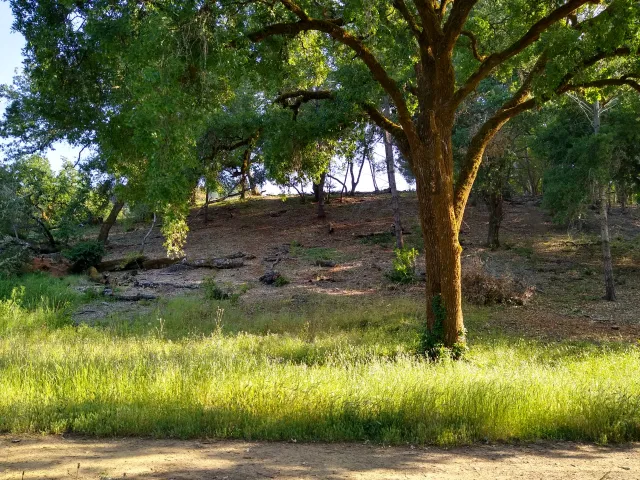
Vegetation Management is the practice of removing or modifying live and dead vegetation to reduce the potential spread of fire ignitions, overall rates of fire spread, flame lengths and severity. Reducing fuels creates safer conditions for emergency responders to work during a fire, evacuations and other land management activities. Fuels treatments are not one-time fixes, but are tools to restore natural ecosystem processes to our land. Remember that there is no one-size fits all approach and some treatments will not work in some locations. Reach out to a resource professional or UCCE Adviser if you need help determining the right treatment.
Resources for Vegetation Management
Fuel reduction and vegetation management strategies are just one goal and objective in the many a landowner may have. It is important to think about the ecosystem as a whole and provide stewardship to benefit multiple aspects of the landscape. Click here to learn about Stewardship in Oak and Coastal ecosystems.
Environmental Review and Permitting Fuels Reduction

Many fuel reduction activities can easily be done by hand or with hand tools do not require any environmental review or permit. However, some fuel reduction projects are large scale or need heavy equipment, thus triggering the need for environmental review and/or permitting. You may be required a permit or environmental review if you have one or more of the following of the following:
- Government funding (Federal, State, or County) for your project. This includes grants and cost-share programs or if an agency (i.e. CALFIRE) is doing the work for you on your property.
- Removing trees for economic return (selling, trading, or bartering; this includes firewood selling).
- Producing Smoke (Pile burning or broadcast burning) - Air Quality District Permits
- Burning (Piles or Broadcast) - CALFIRE Burn Permits
Contact your local RCD, Registered Professional Forester or UCCE Advisor to determine what environmental review your project might require.
Technical Assistance and Funding
Technical Assistance and Funding
Finding the right person, whether that be a Registered Professional Forester, environmental consultant, arborist, or other natural resource professional, can be a challenge. Make sure that person or organization is listening to you and your goals and objectives. While the document below is specifically how to choose a Registered Professional Forester (RPF), the same criteria should apply for any resource professional you engage with.
Forest Stewardship Series 24: Professional Assistance - understand which natural resource professional may be able to assist you and where to find them.
Natural Resource Conservation Service
Environmental Quality Incentive Program (EQIP) is NRCS's cost-share program that provides financial and technical assistance to agricultural producers and landowners to address natural resource concerns and deliver environmental benefits. Practices commonly used by landowners with EQIP funds are tree thinning, chipping, pile building, grazing, invasive species management, and burning.
Post-fire assistance: provide technical assistance, financial assistance, and has helpful resources. Each County has a local office.
Resource Conservation District
Each County has a local office that can provide technical and financial assistance.
North Bay Forest Improvement Program (NBFIP) - cost-share program through the RCDs in the North Bay (Sonoma, Napa, Mendocino and Lake Counties) that is intended for forest landownerships between 5 and 500 acres and will help reimburse costs associated with common forest improvements like thinning, planting, pruning, site prep, and woody residue follow-up treatments. Quality applications will likely already have a forest management plan prepared by an RPF or NRCS conservationist.
Most management activities on forest lands will require a Registered Professional Forester (RPF).
CALFIRE RPF Registration - Learn more about RPFs: training, licensing and the role of an RPF
Registered Professional Forester and Certified Rangeland Manager Roster




